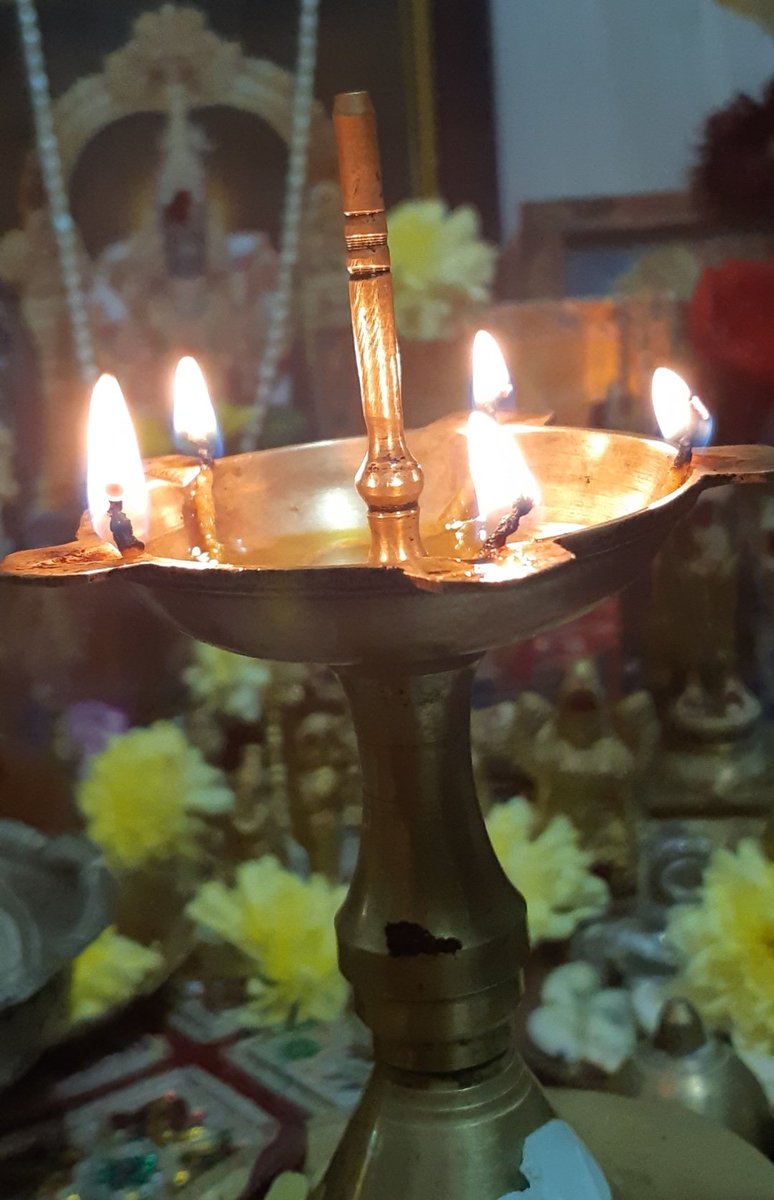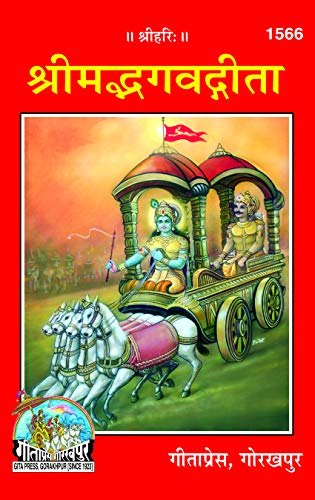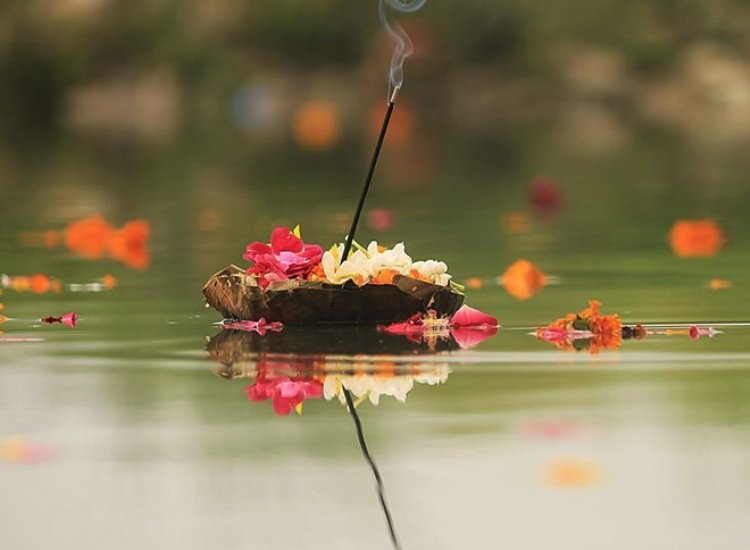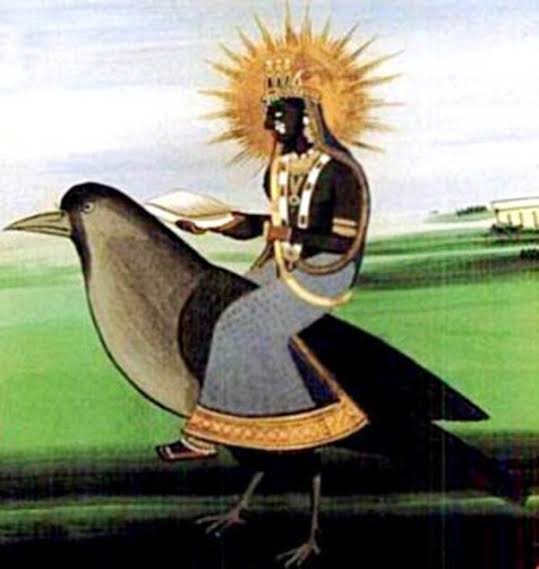Direction & Placement of Deeya
Jothi Facing :
1. Towards North - Dhana Abhivrudhi
2. West - Shatru Naashnam
3. South - Mrityu Ganda
4. East - Generally used - Peace & Prosperity
Jothi Facing :
1. Towards North - Dhana Abhivrudhi
2. West - Shatru Naashnam
3. South - Mrityu Ganda
4. East - Generally used - Peace & Prosperity
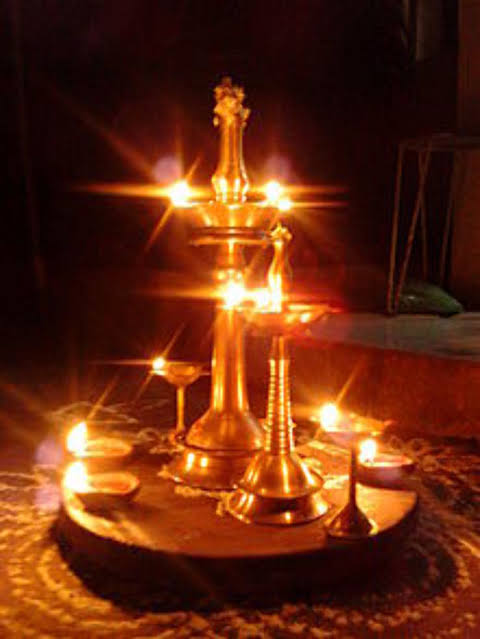
Usually placement of Bhagwaana is on the East or North Walls which is nearer to Neth East Corner. West also is practiced., avoid Placing Bhagwana on south wall and sitting south mukha for prayers. 

The Mukha of the Deeya should face the Bhagwaana. So maximum try to arrange your Lord in such a way that it satisfies directions of deeya beneficial for your daily prayers. Usually East is best.
North East Corners of house should have free space and the early morning sunrays should enter the house as far as possible. East and Norh side towards the NorthEast corner placing Tulsi pot is beneficial for the house and vastu.
Number of wicks to be used 2 for each diya lighting. Number of Deeyas as per your practice.
Best practice is 3 jothis in a Deeya.
Respresnting Triloka, Tri Devi, Tri Devas shakti.
Best practice is 3 jothis in a Deeya.
Respresnting Triloka, Tri Devi, Tri Devas shakti.
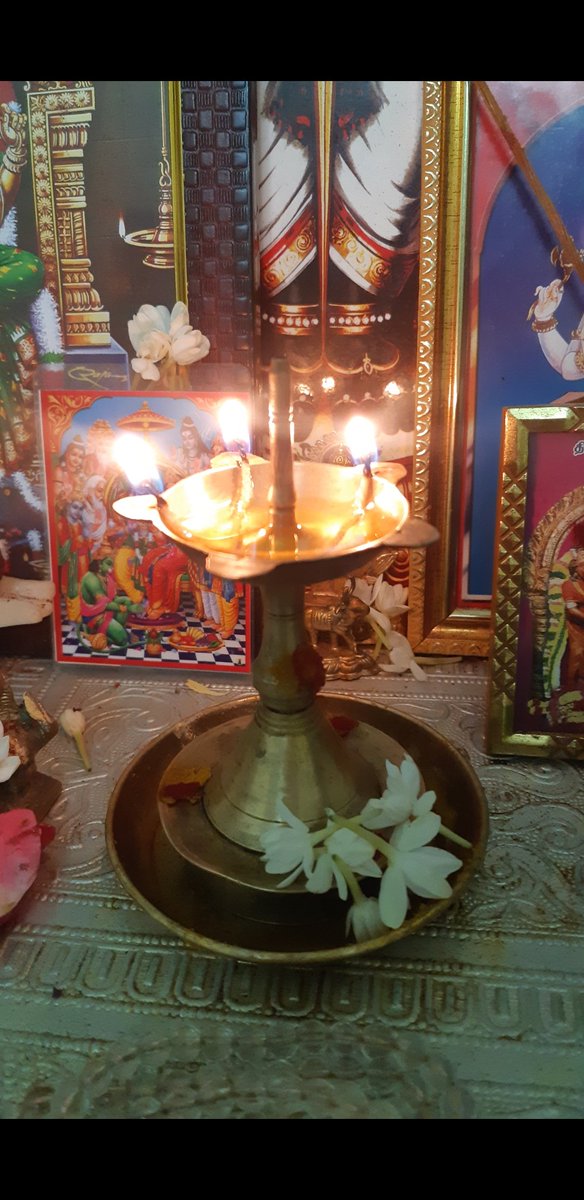
Or 8 aishwaryas made into 4 jothis in 2 deeyas ( 4 wicks 2 jothis in each deeya stand)
Set of 2 likes shown in image on either side of Bhagwan.
Set of 2 likes shown in image on either side of Bhagwan.
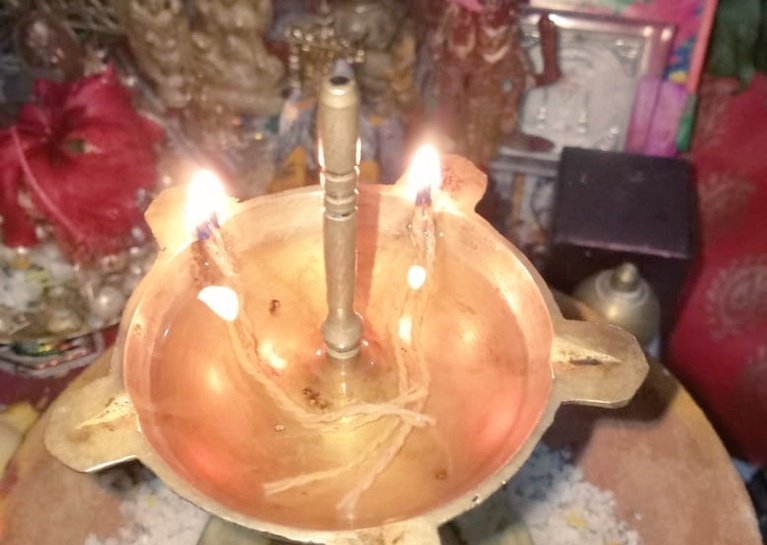
People who want progeny to move forward and looking forward for baby birth practicing 3 mukha the Triloka Deepa will benefit them alot.
Also, light a lamp in the Agni sthana I.e kitchen SE deeya facing the East.
Outside main entrance, near Tulsi Vann and Puja room daily.
Also, light a lamp in the Agni sthana I.e kitchen SE deeya facing the East.
Outside main entrance, near Tulsi Vann and Puja room daily.
Puja room - Morning the man of the family and evening woman of family lighting have more benefits than just women doing it alone. During menstruation both the times men can do. Rest places in evening by woman ( Door, kitchen, Tulsi )
Have Annapurna Photo in the NE corner of kitchen placed. Also a small size Moorti in the Rice /Dhaanya box always. Place Tamarind & Salt together. Place salt and Haldi in ceramic always. No plastics.
Always make a small Rangoli anywhere while placing a deeya and drop a pinch of haldi kumkum to attract shubh and Labh 

Don't use Vegetable oils and Groundnut oil. Shreshta options are pure Til Tel which has origin from Purusha's Body and Cow Ghee which comes from Gau. Some other sources are coconut, Mustard, castor, Mahua and (if any which is in your practice)
You can use buffalo ghee too, but have to mix some Part of cow ghee atleast 1/4th in the whole part of it. Same applies with any oil too. This ensures we don't have any doshas of using oil which have other energies than sathwik or obtained from karmic processes
A house without Deeya
An Anngan Without Tulsi
A Yajmaani's lalaat without Tilak
A woman without adorning saubhagya things always attract Alakshmi to the Gruha 🙏🏼
Have a Bright Journey, removing the darkness all over 🍀❤
Namah Parvati Pataye, Har Har Mahadev
An Anngan Without Tulsi
A Yajmaani's lalaat without Tilak
A woman without adorning saubhagya things always attract Alakshmi to the Gruha 🙏🏼
Have a Bright Journey, removing the darkness all over 🍀❤
Namah Parvati Pataye, Har Har Mahadev

Note: Ekamukhi mud lamps if lighted more than one in groups will give better benefit than only one just lighting in the Puja Sthaana.
Process of Lighting Deeya:
Prepare a Eka Aarati ( Shown In Pic ) with a deeya, and light it by washing hand and with a match stick. After that use it for lighting the main lamp of the puja sthaana. Use it directly to light. Don't use candles 🙏🏼
Prepare a Eka Aarati ( Shown In Pic ) with a deeya, and light it by washing hand and with a match stick. After that use it for lighting the main lamp of the puja sthaana. Use it directly to light. Don't use candles 🙏🏼
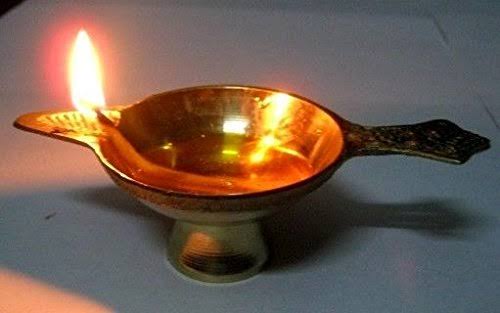
• • •
Missing some Tweet in this thread? You can try to
force a refresh

